The Battle of France: Why Did France Lose So Fast?
Despite its historic strength and superior army, France faced a swift defeat in 1940. Why did this leading nation collapse so quickly?
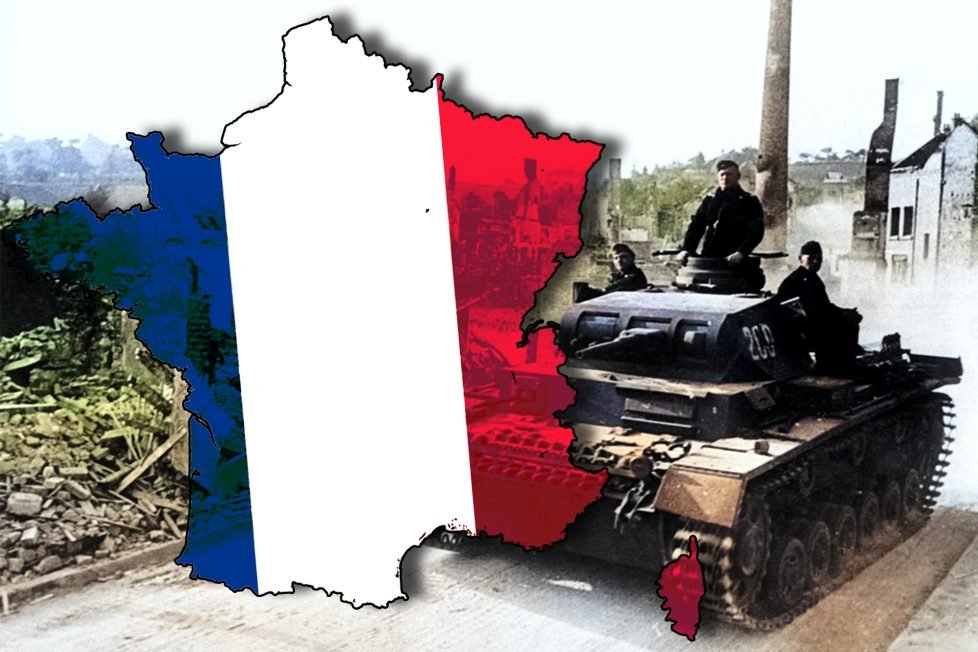
Despite its historic strength and superior army, France faced a swift defeat in 1940. Why did this leading nation collapse so quickly?

Table of Contents
ToggleBy 1938, most of Europe’s nations were experiencing immense tensions in their diplomatic and political relations with Germany. Certain Western officials constantly advised that Germany was preparing for war and that the Nazi leadership was plotting a plan to invade Poland. The leaders of Britain and France were trying to avoid a world’s second blood bath by signing multiple agreements but to no avail. So, on September 1st, 1939, Germany invaded Poland, marking the beginning of the Second World War.
Soon after the German invasion of Poland, on September 3rd, Great Britain and France declared war on Germany. It was part of the Anglo-French efforts to prevent further Nazi expansion and contain Germany. But it was a two-edged sword decision. The leaders of Britain and France hoped that the declaration of war would serve as a warning to Hitler in an attempt to scare him off. However, after noticing the excellent performance of the German army in the Polish campaign, the British and French leaders were fearful. Simultaneously, they declared war but wanted to avoid clashing with the Germans on the battlefield. This, of course, was contradictory and was bound to happen.
The German “Blitzkrieg” in Poland demonstrated that the German army was a modern and highly maneuverable killing machine. In 1939, Poland had a strong army and presented a decent opponent. Furthermore, Poland also had arguably better tanks than the Germans, but thanks to the tactical superiority of the German military leadership, the Polish army was defeated in less than 40 days. The British and the French leaders were astounded by the speed of the German units. Accordingly, this caused them to engage in rapid defense preparations.
On the 4th of September, 1939, the British army began to deploy the British Expeditionary Force to France. The British leadership wanted to stop the Germans at the border between France and Belgium. The combat engineers of the French army were building complex defensive fortifications and laid mines on the Franco-German border. Troops were notified and timely prepared for the imminent German invasion. However, despite having a superior number of tanks and guns, France was defeated so fast that it is considered one of the quickest capitulations in history.
The rise of Adolf Hitler in the 1930s caused distress among the European nations. Hitler’s ambitions prompted nations to prepare for the worst. Most of the European countries could not respond to the danger that Nazi Germany posed, and some had internal political decisions not to. On the other hand, by the start of 1940, France was already producing some of the newest and most innovative weapons of that time.
For instance, the French army was operating a new rifle called MAS-36, built with a high degree of innovation. MAS-36 had a better muzzle velocity than the German standard World War II rifle, the Karabiner 98K. Its light weight made the rifle a favorite among soldiers and enabled better handling characteristics. The Germans even copied the rifle’s bayonet mechanism on their rifle FG-42. The rifle’s only shortcoming was its limited availability. It was made only in 250,000 examples before the Germans invaded France.
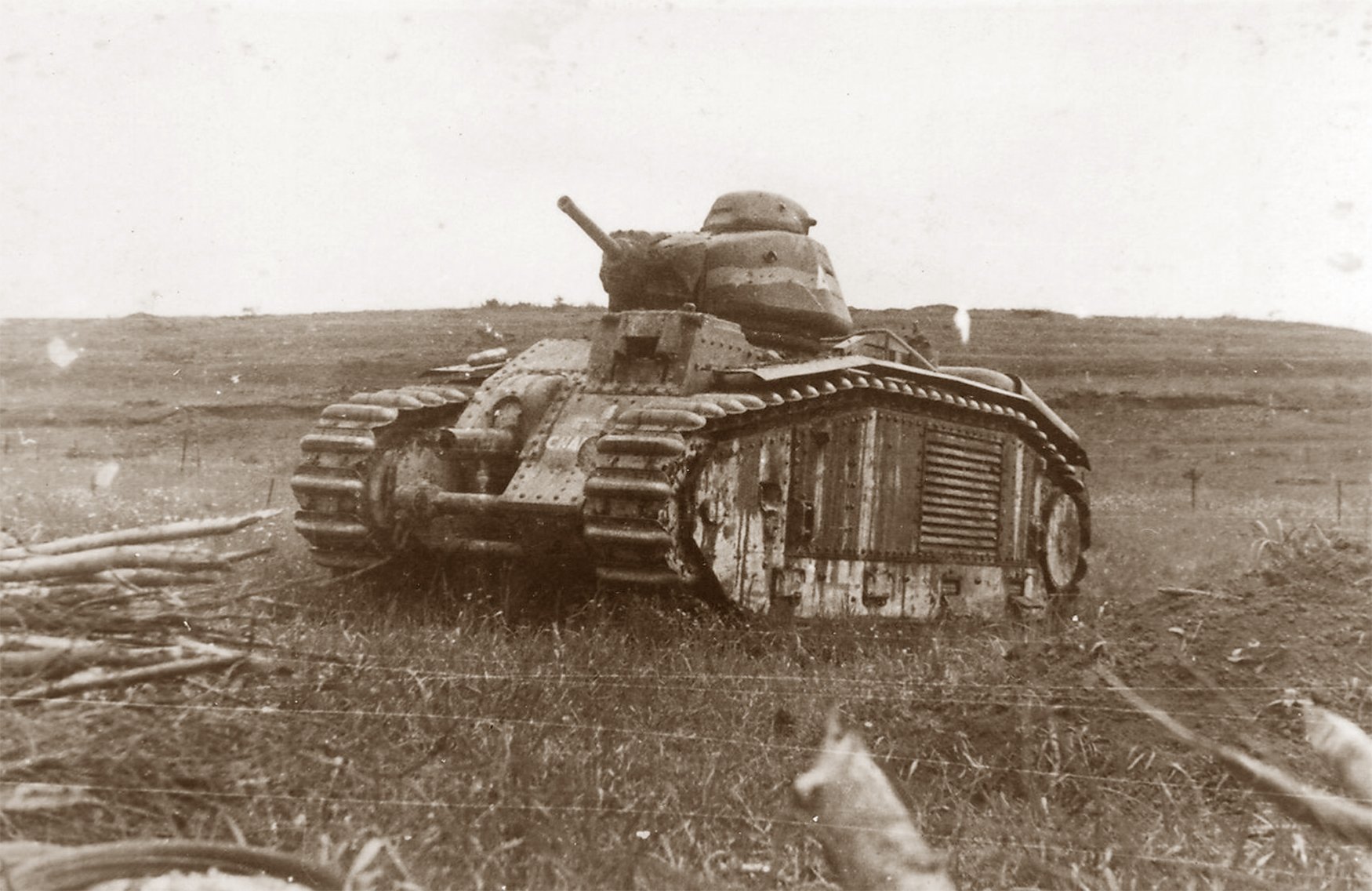
In 1940, France was operating arguably better tanks than the Germans had at the time. The French Char B1 was a heavily armored tank with superior armament than any German tank involved in the Battle of France. The tank’s armament included one 75-millimeter howitzer and one 47-millimeter gun. The howitzer was designed to breach obstacles, and the turret gun was against enemy tanks. However, the tank was also produced in limited numbers and was misused by the French army.
At the start of the Battle of France, The French army operated almost twice as many field and artillery guns as the Germans. Having superiority in artillery is imperative in every military operation. It creates a most welcomed advantage, especially when one’s defending. The French also operated a very accurate field gun, Canon de 75 modèle 1897, that was ideal for tactical use in defense. It had excellent anti-personnel capabilities, a fast rate of fire, and was highly adaptable to battlefield conditions.
By the spring of 1940, the Allied armies had more than 3 400 000 troops dispersed throughout the eastern borders. Some French troops were deployed in the Alps, some in Belgium, but most were located on the French border with Luxembourg and Germany. There, France constructed state-of-the-art defense fortifications and strongpoints. These were interconnected with a complex network of carefully planned trenches and underground tunnels. In front were multiple layers of barbed wire, anti-tank obstacles, and mines. The whole effort was known as the “Maginot Line.”
The “Maginot Line” spanned over 400 kilometers and was considered among the most modern military complexes of the 20th century. The line was riddled with thick concrete bunkers of strategically placed machine guns, mortars, and heavy artillery. But the most dominant feature was the retractable turrets that housed 75-millimeter and 135-millimeter guns. Under the bunkers were underground barracks and mess halls for the troops. The movement was enabled by elevators and railway lines. There was also water and food storage to sustain the troops for weeks. The French leadership purposely constructed the “Maginot Line” to defend against a possible German invasion.
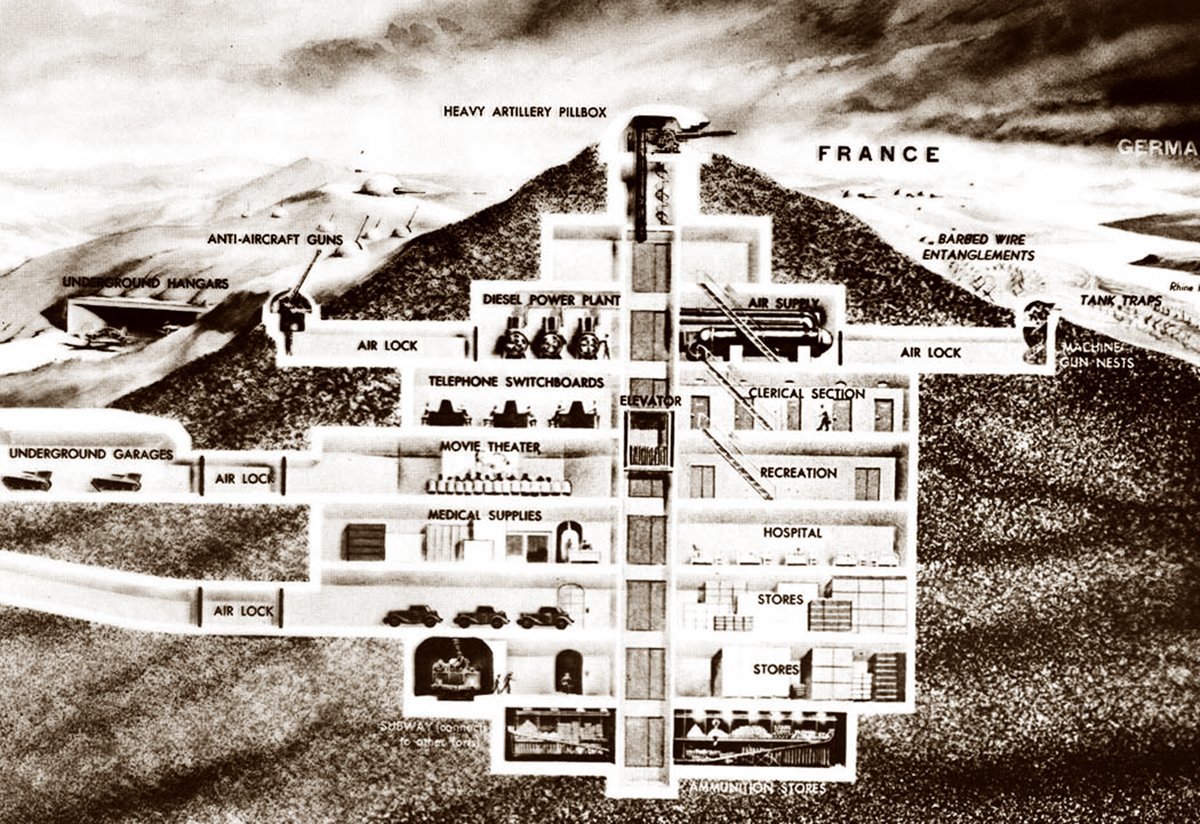
Great Britain formed a formidable force for the defense of France. The British Expeditionary Force, also known as the BEF, was deployed in northeastern France and Belgium. The British had over 300,000 men dispersed between the English Channel and the Franco-Belgian border. They were organized into three army corps and an additional four infantry divisions directly under the command of the BEF commander, John Standish Surtees Prendergast Vereker, 6th Viscount Gort.
As for military equipment, the BEF was equipped with older and outdated equipment. The British soldiers still relied on the World War I rifle Short Magazine Lee–Enfield Mk III. Gas masks were issued to every soldier and were carried hanging from the neck in front of the chest. Head protection was also provided by World War I helmets, without a slight evolution in its design. These methods were characteristic of the First World War, and their effect was limited in 1940.
The BEF also had a limited number of tanks to match the German armored units. Most armored units relied on light troop carriers and reconnaissance tanks such as the universal carriers and the light tank Mk VI. The French and British military commanders expected that the German main assault would come through Belgium, so they concentrated their main forces in the region between the borders of France and Belgium. This would prove catastrophic for the Allies.
The German military command devised a cunning plan to defeat the Allies in France despite all odds being in the Allies’ favor. It is widely known that a force defending from prepared defensive positions has an advantage ratio of 3:1. In other words, the attacking force should be three times bigger than the defending force. And in the battle of France, both sides were on a similar level. The German plan had two phases.
Belgium was the primary target of the first phase of the German plan. The Germans planned an airborne operation across the Albert Canal to capture Fort Eben-Emael. The fort was built after World War I and intended to be used similarly to the “Maginot Line.” On the 10th of May, 1940, German paratroopers landed by gliders and attacked Fort Eben-Emael. The skirmish lasted for one day, after which the Belgian soldiers surrendered. Although outnumbered, the Germans killed over 100 Belgian soldiers and captured over 1000 prisoners while losing only six paratroopers.
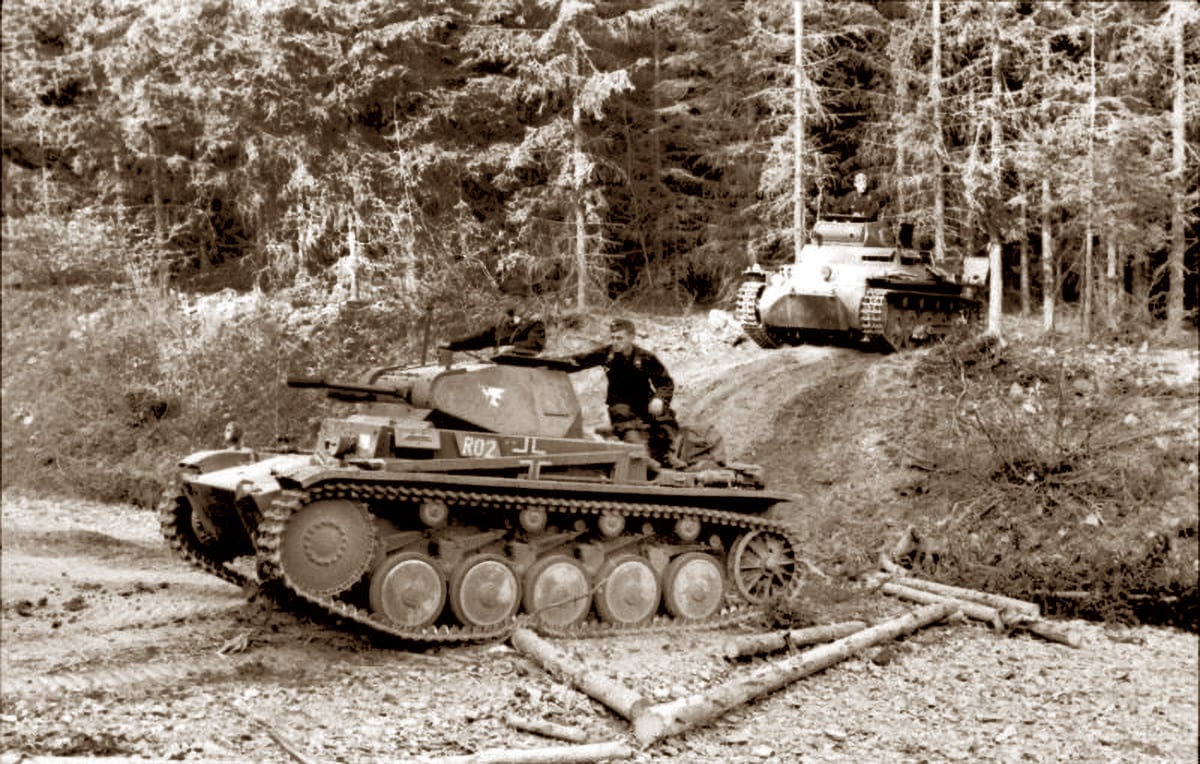
In contrast to the first impression, the German attack in Belgium was not part of the main direction of the invasion. Instead, the German airborne military operation was to lure the Allies. It was a successful strategic diversion. The main thrust of the German invasion was through the Ardennes forest. The French were completely surprised by the German attack. A large concentration of German armored units “blitzed” through the surrounding villages around the city of Sedan and overran the thin defenses of the French army. The French high command never expected the Germans to come through densely forested areas like the Ardennes forest, especially not with tanks. This region was considered impenetrable because of the hills and the narrow roads.
The Germans knew the French did not expect them to come through the Ardennes forest, so they purposely concentrated their main effort there. The French defenses in the area were very thinly deployed and presented almost no obstacle to the German “Blitzkrieg.” After the initial penetration, the German units diverted their attack towards the English Channel to cut off the Allied armies lured by the German diversion in Belgium. The operation was aimed to cut the logistics and the ground communication lines between the Allies in northeastern France and the bulk of the French troops that were manning the “Maginot Line.” The Germans succeeded in confusing the Allies, causing them to retreat. This eventually caused France to capitulate in little more than six weeks. But how was this possible? What caused the inept French reaction, despite having a better standing than the Germans did?
Before the start of World War II, France was constantly looking to produce innovative weapons and equipment that would improve the French army’s capabilities on the battlefield. But not every decision was a correct one. The French invested a lot in the “Maginot Line” and thus lacked funds to support other fields like the development of maneuverable tanks. However, France’s defeat was not due to weak or underpowered forces. It was because of the undeveloped and outdated military doctrine. In 1940, France’s military relied still on World War I generals, who thought that static defenses would stop the enemy. The French high command deployed and dispersed its forces in pre-prepared fixed positions. They were concentrated in large formations without the ability to react quickly. The static defensive strategy contributed immensely to the demise of France.
The lack of maneuverable military doctrine led to insufficient maneuverable reserves. The French army also had a limited number of cavalry tanks, such as the SOMUA S35. These tanks were more mobile and maneuverable than the Char B1 tanks. However, the French military failed to organize them in maneuverable formations that would serve as strategic reserves. Instead, the tanks were dispersed along the frontlines to act more like fixed artillery positions than a tank. This hindered the French efforts immensely.
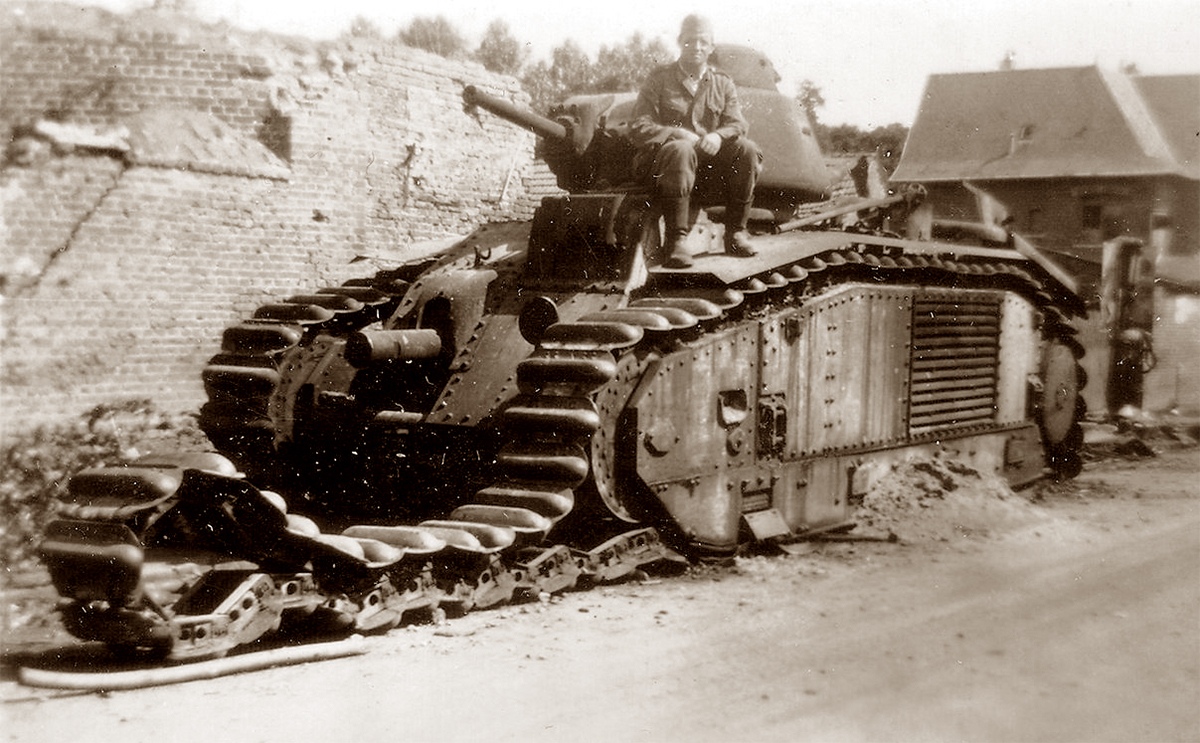
Among the old guard of French generals, there was an officer by the name of Charles De Gaulle. He was an innovative thinker who advocated immensely the use of tanks as maneuverable instruments to support the movement of the infantry. To avoid static battles whenever it is possible. De Gaulle saw the tank as a tool that could help create numerous tactics that would seriously resist the German “Blitzkrieg.” But his efforts were shoved in the drawer of some French general. Instead, the French tanks were primarily seen as breach tools, used in separate formations, moving in parallel lines. Much as the World War I tanks. The German air force and anti-tank guns devastated them, especially when they moved across an open field. The lack of agility, speed, and infantry support made their chances of survival dire.
In the Battle of France, the German air force dominated the sky. In January 1940, France produced the fighter aircraft Dewoitine D.520. It was a formidable fighter that matched the performance of the German aircraft. However, by the time of the German invasion of France, the plane was in scarce quantities. On the other hand, the British Royal Air Force’s deployment of fighter aircraft in France was limited. Regardless of the efforts, most British and French combat-worthy aircraft were destroyed on the ground. So, the lack of air support made the Defense of France more ineffective. The German planes bombed most air bases, supply hubs, armored units, and fortified positions before the German infantry arrived.
Perhaps the Allies were most surprised by the speed of the German infantry. When the French troops slept at night, the Germans were crossing rivers. They were unstoppable and robotic in their behavior. This was due to their superior training and tactics, but not only. The German infantry was issued with a drug called “Pervitin.” It was an early form of methamphetamine that kept the individual soldier on alert and awake. Sometimes, the German troops didn’t rest for three days. It was another factor that surprised the Allies and was a dominant contributor to the speed of the German maneuvers.
In the end, the overall demise of France was due to the successful diversion of the Germans. They used the Allies’ naivety and arrogance to launch an attack on the frontline’s weakest point that defied every Allied expectancy. The German high command managed to outsmart the Allied generals. They used pincer movements as part of their famous “Blitzkrieg.” Its success relied on the coordination and the speed of the German troops’ movement.
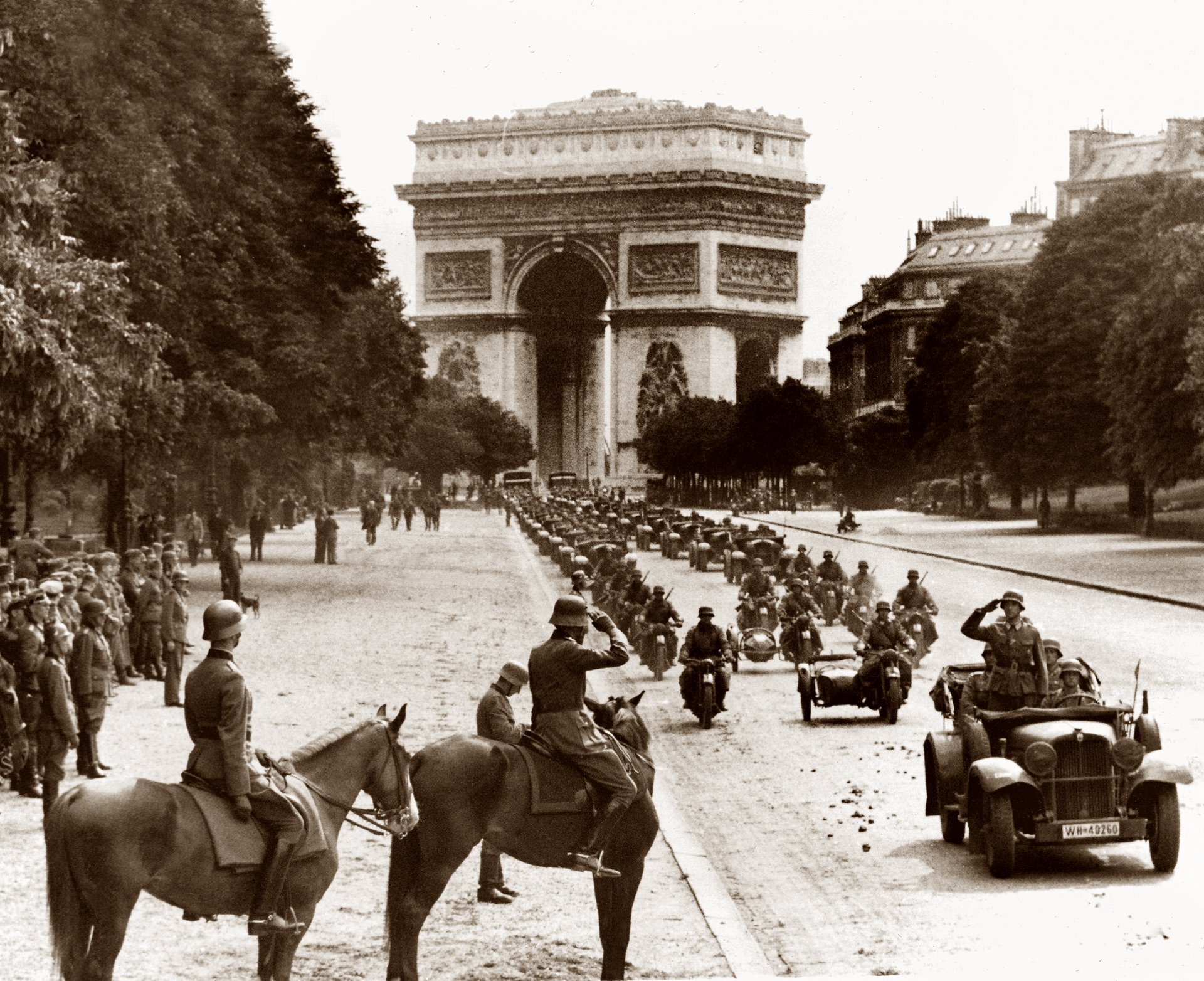
The Defeat of France urged the Allies to rethink their approach to the war. The German success started a new military world where every combat unit must be agile, fast, and fit in a combined warfare system. German senior officers such as Heinz Guederian, Erwin Romel, and Erich von Manstein initiated the new military thinking. They used inventive and risky methods. Sometimes, the German high command disapproved of them and considered them dangerous and unstable. But they pushed and continued to use the methods regardless. Erwin Romel emphasized using fast and maneuverable tanks as successful spearhead instruments. Heinz Guederian advocated for continued movement of the tanks after the breakthrough without waiting for the infantry. Such a dangerous move sometimes faced backlash, especially in the later stages of World War II. Nevertheless, they were true pioneers of combined maneuverable warfare tactics.
Today, the German maneuver in the Battle of France represents a case study of successful strategic and tactical maneuvers of combined forces. It clearly shows the guidelines for overwhelming a numerically superior enemy by applying sophisticated methods that involve combined forces. In the modern world, no success on the battlefield is without effective coordination between the air force, the ground forces, and the logistics. Tanks and infantry actions are coordinated and well supported by artillery units. The Battle of France had an immense influence on the development of the most powerful armies in the world. It presents a basis from which officers and military experts can drain knowledge almost indefinitely.
